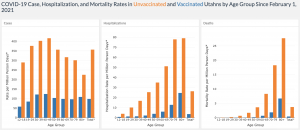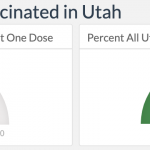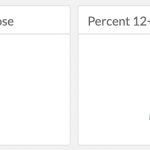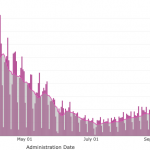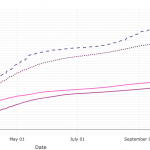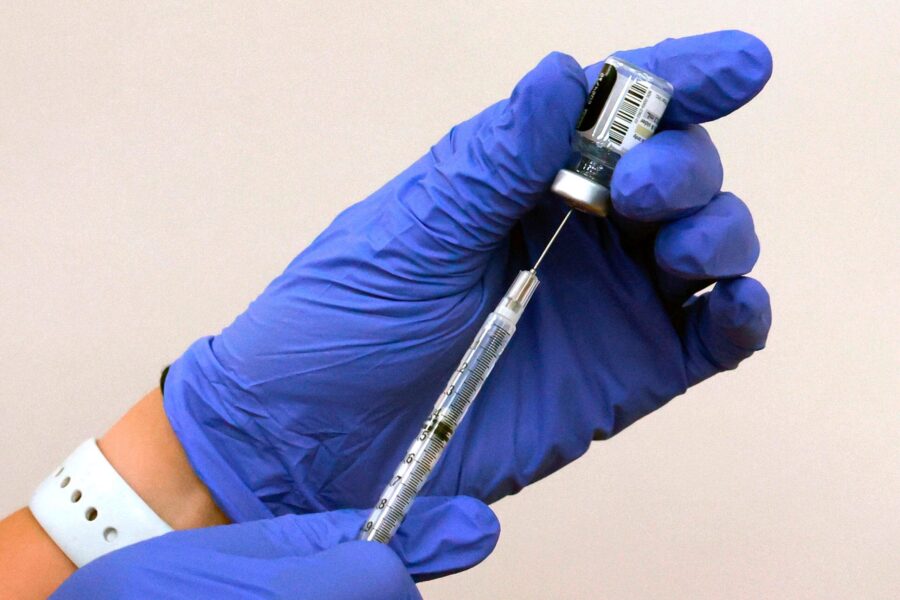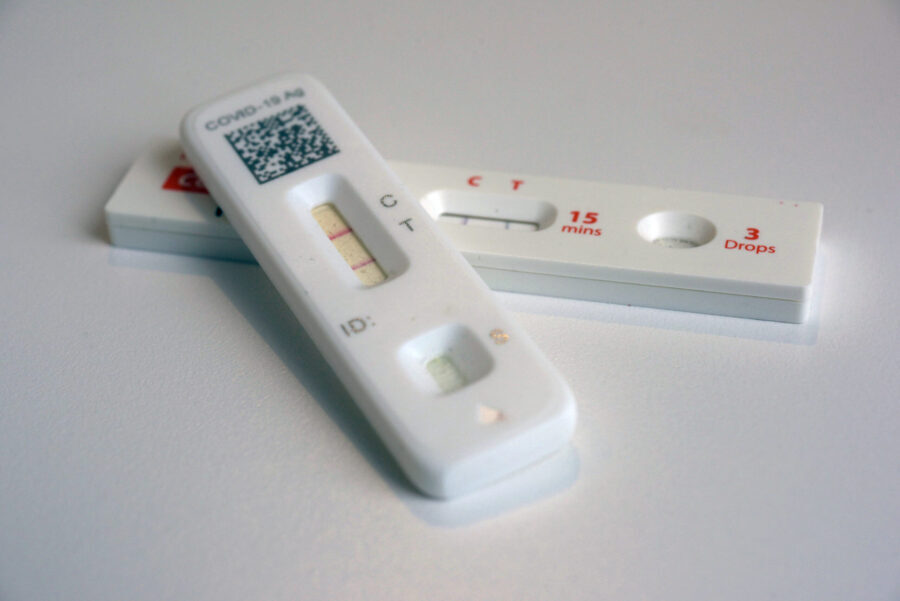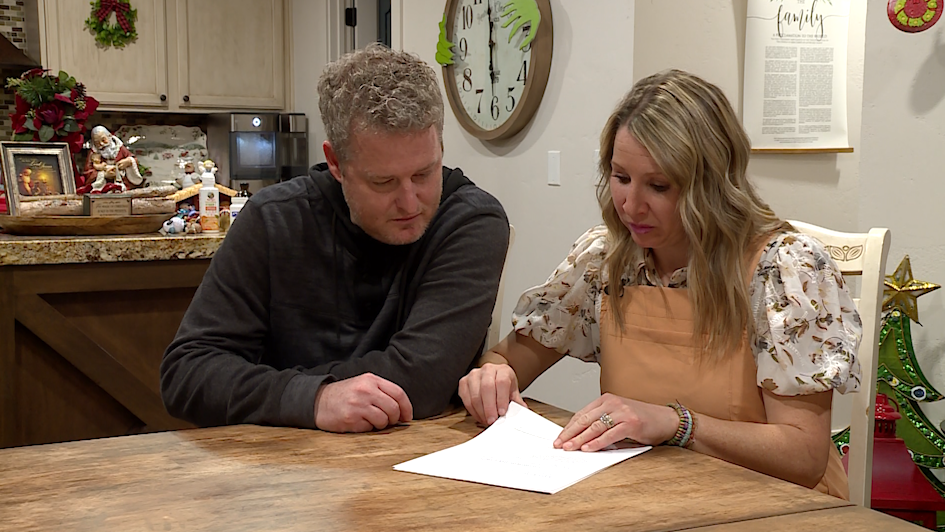Utah reports 1,250 COVID-19 cases, 11 additional deaths
Nov 2, 2021, 1:10 PM | Updated: 1:21 pm
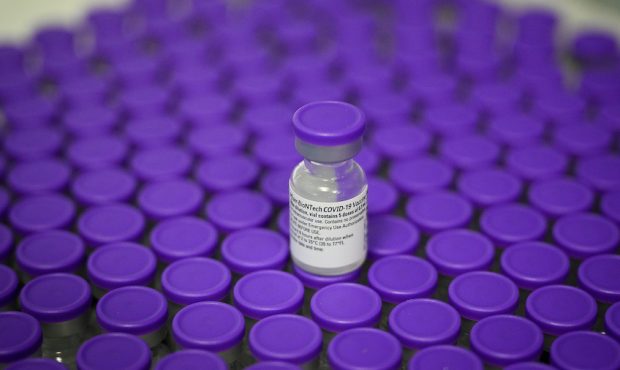
FILE PHOTO (Photo by Leon Neal/Getty Images)
(Photo by Leon Neal/Getty Images)
SALT LAKE CITY — The Utah Department of Health on Tuesday said 11 more Utahns have died due to COVID-19 and 1,250 residents have tested positive for the virus.
Of those cases, 242 (19.36%) were in school-aged children.
- 129 cases in children ages 5-10
- 56 cases in children ages 11-13
- 57 cases in children ages 14-18
Currently, 532 Utahns are hospitalized due to the virus and the ICUs at Utah’s 16 referral center hospitals, where the majority of COVID-19 patients are treated, are 92.7% full — above the state’s “functionally full” threshold of 85%.
No one's taken the brunt of the pandemic like health care workers, and the unrelenting cases of COVID-19 have brought many to their breaking point. #KSLTV #YourLifeYourHealth with @Intermountainhttps://t.co/9bRtCHhNoh
— KSL 5 TV (@KSL5TV) September 9, 2021
The rolling seven-day average for positive tests was 1,452 — down from 1,506 on Monday and 1,482 last Monday.
An additional 12,056 vaccine doses have been administered since Monday, bringing the state’s total number of vaccine doses given to 3,771,087.
UDOH said over 1.75 million Utahns are now fully vaccinated and over 1.95 million have received at least one dose of a vaccine.
The U.S. Food and Drug Administration and Cent fully approved Pfizer’s COVID-19 vaccine, and all three major vaccines have been approved for booster shots.
And a panel of FDA advisers on Tuesday endorsed kid-size doses of Pfizer’s shots for 5- to 11-year-olds.
Vaccinated vs. unvaccinated risk ratios
UDOH said it has updated how the department calculates risk ratios on its data dashboard.
“We are now reporting age-adjusted risk ratios,” UDOH officials said. “This is an important update that more accurately reflects the risk for the overall population. The change will result in higher risk ratios for the unvaccinated for being hospitalized and dying. This is because the prior method, which did not age-adjust, biased the data toward older adults who are more likely to be both vaccinated and hospitalized or die from COVID-19 than younger people. By age-adjusting, we are better reflecting the true risk for all Utahns.”
In the last 28 days, people who are unvaccinated are at 15.6 times greater risk of dying from COVID-19, 10.5 times greater risk of being hospitalized due to COVID-19, and 5.1 times greater risk of testing positive for COVID-19 than vaccinated people.
Since Feb. 1, people who are unvaccinated are at 8.7 times greater risk of dying from COVID-19, 7.2 times greater risk of being hospitalized due to COVID-19, and 3.6 times greater risk of testing positive for COVID-19 than vaccinated people.
Testing
UDOH reports 3,723,126 people have been tested — 7,009 more than yesterday. Of those, 554,311 Utahns have tested positive for COVID-19 — an increase of 1,250 new cases.
The rolling seven-day average for positive tests was 1,452 — down from 1,506 on Monday and 1,482 last Monday.
On June 1, Utah’s rolling seven-day average had dropped to 200 cases.
The rolling seven-day average for percent positivity of “people over people” rose to 17.5% while the rolling seven-day average for percent positivity of “tests over tests rose to 11.5%.
Vaccinations
The state has administered 3,771,087 vaccine doses in total as of Tuesday, which is an increase of 12,056 over yesterday’s numbers.
As of Tuesday, over 1.95 million Utahns had received at least one dose of a vaccine and over 1.75 million Utahns had been fully vaccinated.
Over 4.5 million vaccines have been delivered to Utah.
Hospitalizations
Currently, 532 people are hospitalized with confirmed cases of COVID-19 and 210 of those people are in intensive care units.
Utah’s ICUs were 89.8% full and the ICU beds in Utah’s referral centers were 92.7% full Tuesday — above the state’s utilization threshold or “functionally full” mark of 85%.
Forty-one percent of Utah’s ICU usage is due to COVID-19 patients.
“At about 69% overall ICU utilization, ICUs in Utah’s major hospitals with the ability to provide best care for COVID-19 patients begin to reach staffing capacity,” UDOH officials said. “Seventy-two percent use among all hospitals and 77% in referral center hospitals creates major strains on the health care system. When 85% capacity is reached, Utah will be functionally out of staffed ICU beds, indicating an overwhelmed hospital system.”
Deaths
As of Tuesday, the virus had killed 3,248 of the state’s residents.
The following deaths were reported on Tuesday:
- Female, between 65-84, Emery County resident, not hospitalized at time of death
- Female, between 65-84, Weber County resident, hospitalized at time of death
- Male, between 65-84, Davis County resident, hospitalized at time of death
- Male, between 45-64, Weber County resident, hospitalized at time of death
- Female, between 65-84, Salt Lake County resident, hospitalized at time of death
- Male, between 65-84, Washington County resident, hospitalized at time of death
- Female, between 65-84, Iron County resident, hospitalized at time of death
- Male, between 25-44, Salt Lake County resident, not hospitalized at time of death
- Male, between 65-84, Salt Lake County resident, not hospitalized at time of death
- Male, older than 85, Weber County resident, hospitalized at time of death
- Female, between 65-84, Davis County resident, hospitalized at time of death
Nationwide Numbers
Coronavirus Resources
Have you or a family member been affected by coronavirus issues in Utah? KSL wants to hear from you. Contact KSL by emailing social@ksl.com.
Click here to sign up for a vaccine and here to see how Utah’s vaccine rollout is progressing.
The latest COVID-19 stories from KSL can be found here.
How do I prevent it?
The CDC has some simple recommendations, most of which are the same for preventing other respiratory illnesses or the flu:
- Get vaccinated
- Avoid close contact with people who may be sick
- Avoid touching your face
- Stay home when you are sick
- Cover your cough or sneeze with a tissue and then throw the tissue in the trash
- Wash your hands often with soap and water for at least 20 seconds, especially after going to the bathroom, before eating, and after blowing your nose, coughing or sneezing. Always wash your hands with soap and water if your hands are visibly dirty.
- If soap and water are not readily available, use an alcohol-based hand sanitizer with at least 60% alcohol.
The CDC recommends Americans should continue wearing cloth face coverings in public settings where other social distancing measures are difficult to maintain (e.g., grocery stores and pharmacies).

